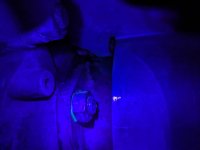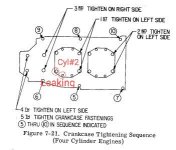I did my recent condition inspection with the help of a local A&P IA. Most of the "inspecting" I did myself, but some projects required specialized tooling. And the second set of eyes was helpful.
We noticed a bit of oil wetness at the bottom of one Cyl #2 (this is an O-320-E2A). Prior to the engine being washed down, prior to any attempt to prove the source of the leak, the mechanic recommended the cylinder bolts be retorqued, and then if that didn't fix the leak we'd dig further. He also said that it is the normal recommendation with piston engines to retorque ALL cylinder bolts at EVERY annual inspection, and offered to do that for me on a follow-up visit.
At the time, I said it sounds good, let's plan for that when I return. But now that I've completed the CI and understand a ton more about my engine, I'm looking at that project and really wondering... Is that true? Do people really retorque on every annual? Doing so would require all the baffling to come off, perhaps even the intake & exhaust tubes, perhaps even the oil lines to the oil cooler. What a project!
Thoughts?
We noticed a bit of oil wetness at the bottom of one Cyl #2 (this is an O-320-E2A). Prior to the engine being washed down, prior to any attempt to prove the source of the leak, the mechanic recommended the cylinder bolts be retorqued, and then if that didn't fix the leak we'd dig further. He also said that it is the normal recommendation with piston engines to retorque ALL cylinder bolts at EVERY annual inspection, and offered to do that for me on a follow-up visit.
At the time, I said it sounds good, let's plan for that when I return. But now that I've completed the CI and understand a ton more about my engine, I'm looking at that project and really wondering... Is that true? Do people really retorque on every annual? Doing so would require all the baffling to come off, perhaps even the intake & exhaust tubes, perhaps even the oil lines to the oil cooler. What a project!
Thoughts?






